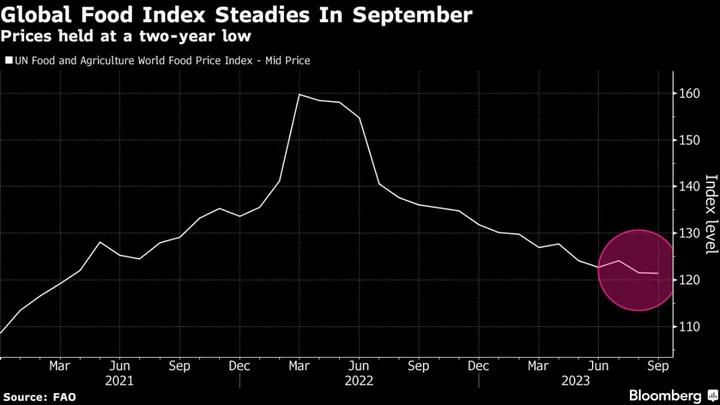Global food prices steadied at the lowest in more than two years as improving supplies of oilseeds and some grains countered sugar shortages.
A gauge of food-commodity costs was little changed in September, the United Nations’ Food and Agriculture Organization said Friday. The slump from a record set in March 2022 should eventually help ease grocery inflation that has been rampant since Russia’s invasion of Ukraine — and there are signs of that already happening in some countries.
Cheaper vegetable oils have been a significant driver of this year’s drop. Harvests of sunflowers in the Black Sea region and palm crops in Southeast Asia pulled prices almost 4% lower in September.
While grains rose slightly, they also remain lower this year. Russia’s second straight bumper wheat harvest is buffering global supplies, with world grain stockpiles expected to reach a record. Also, Asian rice prices have retreated from a 15-year high as better crop prospects in Thailand help stem the shock wrought by Indian export restrictions.
Still, futures for sugar — another major food staple — hit the highest in more than a decade last month. India saw its lowest monsoon rainfall in five years, increasing worries that the country will restrict sugar exports to keep local prices in check ahead of next year’s national election.
Dairy and meat prices declined last month, the FAO said.
It takes a while for lower food-commodity prices to filter through to supermarkets, which have been contending with high energy and labor expenses. Retail food prices in Britain fell for the first time in more than two years in September, though costs have continued to climb in nations from Turkey to Kenya.
--With assistance from Megan Durisin.
(Updates with chart and detail on grain stockpiles in fourth paragraph.)

